
I just attended the wonderful and stimulating FLXcursion global Riesling conference in the Finger Lakes (FLX) region of Upstate New York where I also presented a seminar on Tuesday, 23rd July. I got a lot of requests to post at least my introductory comments, so here they are.
Welcome to the Wrong Side of the Tracks seminar at the FLXcursion conference about Riesling in warm and warming regions around Planet Wine in the 21st century. I suggest we all belong to the reality-based community and that means there’s no place here today for nostalgia or wishful thinking. The title of this seminar is appropriate, because it’s seriously shocking. I know I’ve got a reputation for liking to shock people, and it’s true I enjoy doing that, but this is shocking solely because of the massive change that recently occurred in many Riesling regions.
We all know the climate is warming, but I think most of us think it’s a slow process and for Riesling it is mostly positive. I felt that way too until I took a long hard look at the recent weather stats and came to the conclusion that Cool Climate is Dead in Old Europe. Global warming just abolished cool climate viticulture there (though not in the New Europe of wine, by which I mean places like Poland, Denmark and England). This is particularly clear if you look at the Riesling regions of Europe. I must stress that what I’m talking about here is the weather in certain Europe regions during the last decade. How this new climatic pattern affects the aroma and flavor of the wines from these regions is another matter entirely, and with today’s tasting we’ll be seeking answers to that question.
This seminar has a global theme, so it is also about understanding what’s happening in Riesling regions far outside Europe with very different landscapes and the implications of warming climates there. If you taste those wines with an open mind, then I think you find many Rieslings from rather warm regions that show characteristics (for example, fresh fruit and floral aromas, crisp acidity and sleek body) we consider reliable markers for cool climate wines. Clearly, in spite of the warm conditions there this type of wine is possible, but in those regions too, the situation is changing fast. For them too the question is what happens next.
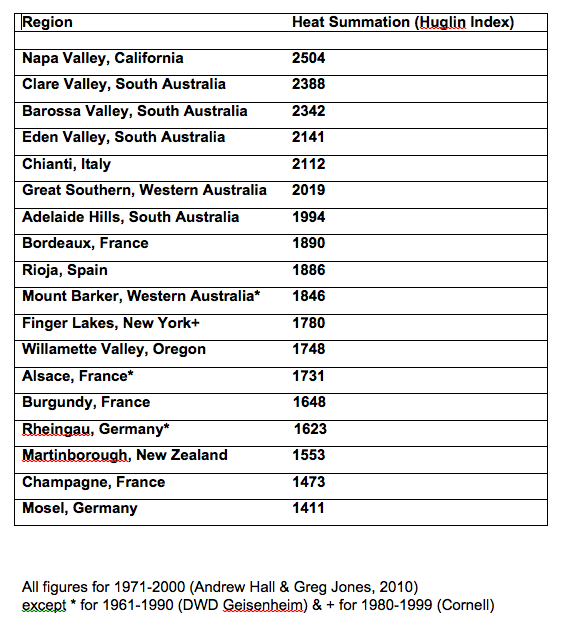
Now on to the stats. Let’s start with how things were at the end of the 20th century. The first table shows the long-term average heat summations (on the Huglin Index) for a selection of winegrowing regions around the world, some important for Riesling, others not. This picture, plus a bit of warming, is what most wine industry people around the planet regard as the current situation, but even then we tend to make some serious mistakes. For example, Clare Valley in South Australia is frequently declared to be cool climate, but it has a heat summation of 2388, which is higher than Barossa at 2342! This common misjudgment results from the fact that Clare is the largest Riesling region in the Southern Hemisphere and because the fresh aromas and crispness of Clare Rieslings make us wrongly assume the region must be cool.
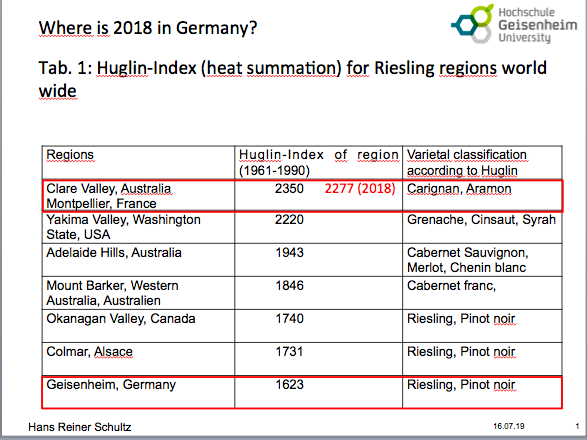
Now let’s turn to the 2018 vintage in Europe. The second table shows what happened in Geisenheim in the Rheingau (the location wine university and research station) last year. The heat summation for Geisenheim in 2018 is marked in red. Note that the Rheingau is not the warmest winegrowing region in Germany by far. Southern Rheinhessen, the Pfalz, Southern Baden and Central Württemberg are all significantly warmer. In 2018 Geisenheim had a heat summation of 2277 compared with an average of just 1623 during the period 1961-1990. What a huge leap! A Huglin Index of 2277 means Germany was warmer than Eden Valley and almost as warm as the Clare Valley, the two premier Riesling regions of South Australia!
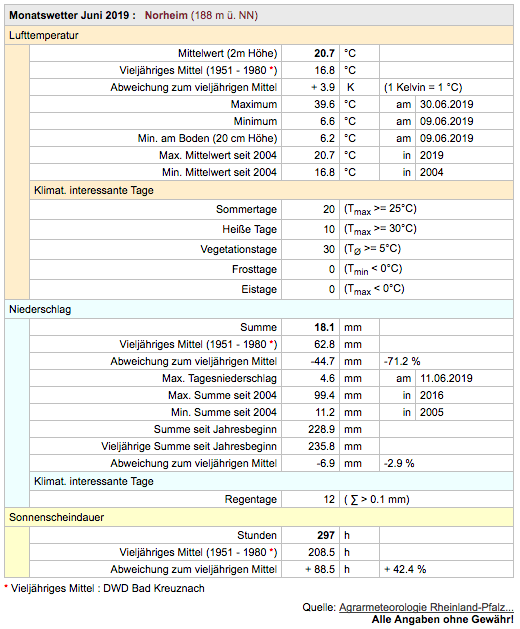
The third table shows how a rather similar situation is developing this year. Here is the weather report for June 2019 for Norheim in the Nahe Valley, one of the “classic” cool climate Riesling regions of Europe. I chose Norheim, because it’s the closest weather station to Weingut Dönnhoff and to Gut Hermannsberg where I work as Riesling Ambassador. Cornelius Dönnhoff (a member of my panel) tells me the Norheim weather station is positioned close to a cliff that may push the highs up by as much 1°C, so you may want to adjust these figures accordingly.
Globally, June 2019 was the warmest June ever recorded by a margin of 0.1°C. For Europe it was the warmest June ever recorded by a margin of 1.0°C, and in Norheim June 2019 was fully 3.9°C warmer than the average for the late 20th century. Even if you correct down the measured high of 39.6°C in Norheim, then,it still tops the month’s high of 37.1°C in Bordeaux and that of 37.8°C in Madrid. The 297 sunshine hours during June 2019 in Norheim are also extraordinary, since they are 42.4% more than the average for the late 20th century. July 2019 started cooler in the Nahe like most of Germany, but today’s high in Norheim is 32°C and the predicted highs for the next four days are 37°C, 38°C, 37°C and 34°C!
I’m sure that some of you are now saying to yourselves, “yes, but there are still some vintages in Europe that are much cooler,” because that’s what I also said to myself. Unfortunately, we are wrong.
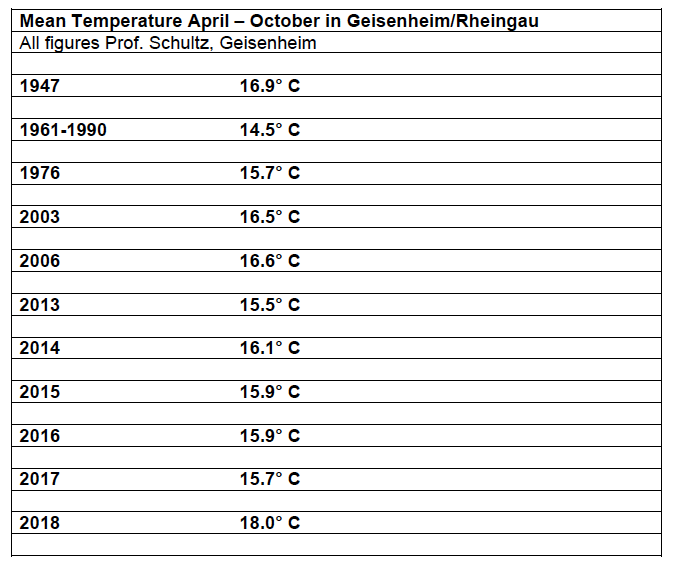
The fourth table shows the mean temperatures during April – October (the growing season) for the last six years and selected earlier vintages in Geisenheim. When I started getting interested in Riesling in the early 1980s I could still buy wines of the great 1976 vintage rather cheaply and I can still remember that very warm dry summer in England. Only much later did I learn that the summer of 1947 was the warmest of the 20th century. The mean growing season temperatures in Geisenheim for those exceptional vintages were 15.7°C in 1976 and 16.9°C in 1947, far above the average for the late 20th century of 14.5°C.
Now let’s turn to the figures for the last six years. For example, wine industry people inside and outside Germany generally regard 2013 as a cool vintage, because the harvest conditions were cool and the wines have high acidity/low pH that makes them taste sleek and taut. However, 2013’s mean growing season temperature in Geisenheim was 15.5°C, almost as high as that of 1976. Since then the figure for every year equaled or exceeded that for 1976. In 2018 the record of 1947 was smashed by a margin of 1.1°C ! I rest my case and pose the question, where do we go from here?
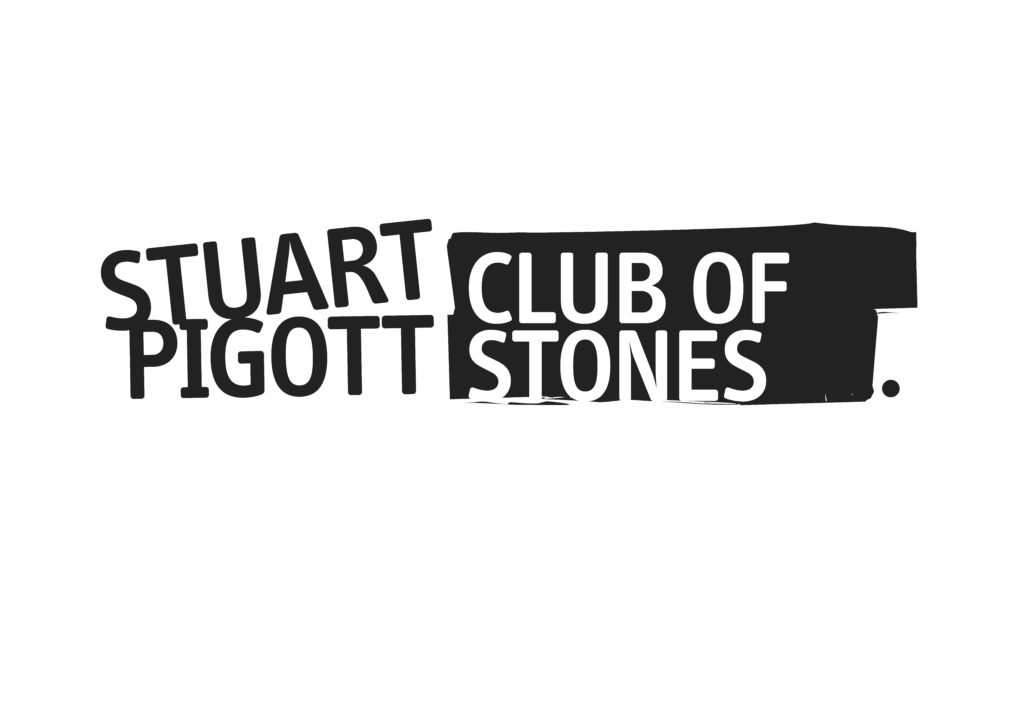

Stuart, very interesting stuff. Is there any way to post the tables?
Very interesting observations, Stuart. I think timing of heat accumulation as well as daily delivery might need to be considered. Does this increase in accumulation represent a longer growing season, with plants budding out earlier in the Spring or having the ability to continue to ripen later into the Fall? Or is the heat coming in extreme spikes like this past week to parts of Europe. Since the vine shuts down and doesn’t ripen above 88F or so, does the excess heat above that threshold represent “phantom accumulation” for the plant? Or, does it do something additionally detrimental via heat stress at extremes?